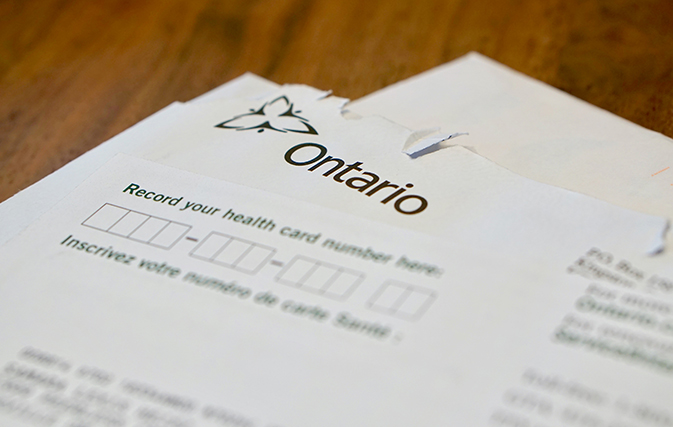TORONTO — Even if the Ontario government does follow through on a proposal to cut OHIP’s Out-of-Country Travellers Program, that doesn’t change the fact that OHIP travel insurance coverage is already minimal and clients should be advised about the benefits of purchasing additional travel insurance no matter what happens, says Dan Keon, Vice President, Market Management, Allianz Global Assistance Canada.
Reports emerged yesterday that Ontario is considering ending the government-run travel insurance program that partly covers the cost of emergency health services abroad.
Critics of the proposal say the move will hurt snowbirds and frequent travellers.
Keon says: “While we can’t comment on government policy, the current coverage through OHIP and other provincial health plans for medical emergencies experienced outside of Canada is already very limited, with approximately 5% of costs incurred abroad covered through OHIP. Allianz Global Assistance continues to encourage every Canadian to arrange medical travel insurance before they leave their home province or the country.”
This recommendation is consistent with reminders recently issued by the Government of Canada on the importance of travel insurance, added Keon.
“Ultimately, the provincial government’s announcement does not change the need to protect yourself with adequate travel medical insurance coverage before leaving Canada.”
The parliamentary assistant to Health Minister Christine Elliott said yesterday that the government is reviewing OHIP’s Out-of-Country Travellers Program as part of efforts to address the province’s $11.7 billion deficit.
“We don’t have an unlimited amount of money, obviously,” said Progressive Conservative legislator Robin Martin. “We want to maximize value we get for people and we think that this is not an effective use of our resources.”
The program currently covers out-of-country inpatient services to a maximum of $400 per day for a higher level of care, such as intensive care, as well up to $50 per day for emergency outpatient services, and doctor services.
Martin said the program offers limited travel insurance coverage – paying out as little as five cents on the dollar in some instances – and encouraged people to purchase additional travel insurance when they go abroad.
“They need to get adequate travel insurance to be covered,” she said. “(The OHIP program) may be giving people a false sense of security that they have coverage when the coverage is very, very limited.”
The province spends $2.8 million to administer approximately $9 million in claim payments through the program every year.
The Tories posted the proposed change on the province’s regulatory website yesterda, offering the public six days to comment on it. The change would come into effect Oct. 1 if the government decides to proceed with it.
NDP legislator Marit Stiles called the cut “disturbing” and accused the government of attempting to sneak the change past Ontario residents without proper consultation.
“Without actually having a conversation with the folks who will be affected, who travel overseas or to the south during the winter months … I don’t know how this government can be making this decision at all,” she said. “I don’t really care how big or small it is.”
In her 2018 report, Auditor General Bonnie Lysyk said the Ministry of Health processed an average of 88,000 out-of-country claims per year over a five year period and paid an average of $127 per claim.
The majority of claims paid out in 2017-2018 – 83% – were made for services in the U.S., the report notes.
Lysyk also uses an example to illustrate the quandary uninsured travellers can find themselves in even during simple border crossings.
She highlighted the case of ‘Mary’ an Ontario resident who travelled to Buffalo for a weekend of shopping and was involved in a car accident during her trip. The woman returned to the province with a $10,000 hospital bill and $3,000 in doctor’s fees. After making a claim to OHIP, she was reimbursed $1,400, leaving her $11,600 out of pocket.
Lysyk also noted the high administrative costs of the program, but she said they arise because staff must check varying physician services fee rates and process claims manually. She recommended that the government seek ways to reduce administrative costs by adopting a single reimbursement rate for all health services obtained out-of-country.
She also recommended the government bolster efforts to inform Ontarians of the limit on reimbursement rates under the program and on the need to purchase private health insurance before travelling.
Executive Director of the Travel Health Insurance Association (THiA) Will McAleer says: “OHIP coverage has never been something to depend upon when travelling out of province, since it covers less than 5% of out of country expenses for Ontarians.
“If the recent changes help ensure that travellers are not surprised by a $50,000 bill for a medical emergency while travelling, the benefit would be much higher than the government’s projected savings for such a change.”
McAleer notes that one of the most important things for travellers to understand is that they have the right travel insurance coverage for their trip. “By eliminating the out of country benefit, this could help ensure adequate travel insurance is purchased for every trip outside of Canada.”
With files from The Canadian Press

